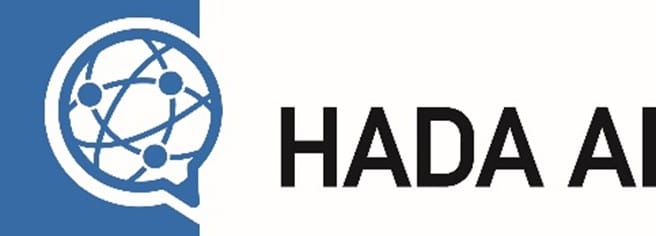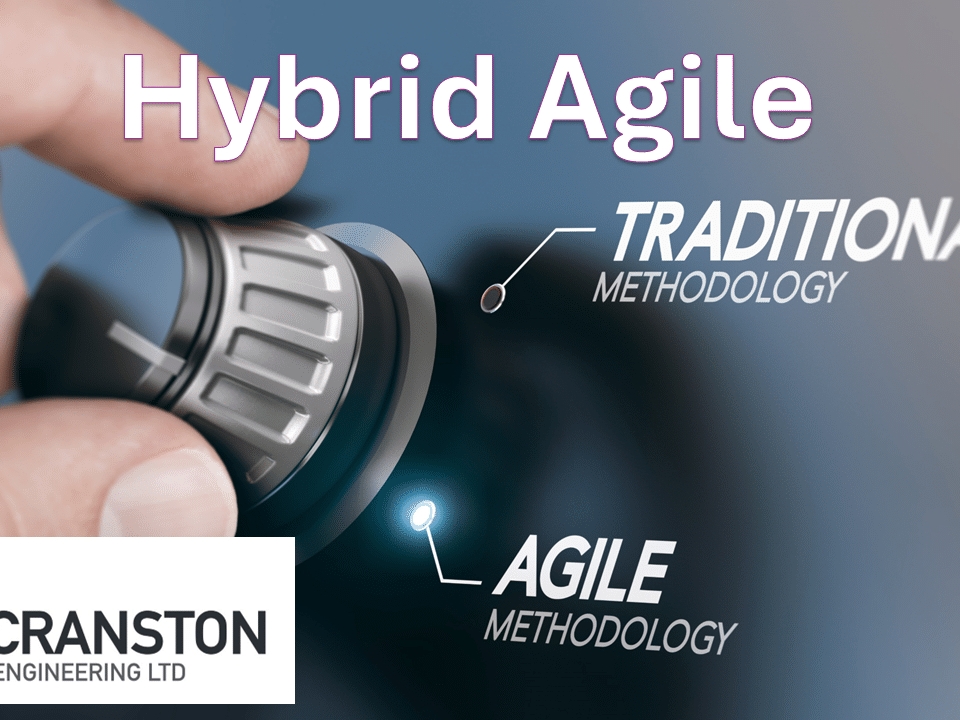What is Hybrid Agile
In simple terms Hybrid agile combines elements of both Agile and Waterfall project management methodologies. It’s a flexible approach that adapts to the unique needs of each project/business process.
Think of Hybrid Agile as a spectrum of ways of working from 100% Predictive waterfall on the left graduating towards fully agile on the right

Source: PMI Report 15th Annual Pulse of the Profession
Many of us have been brought up with traditional waterfall predictive project management and at times can find the rigid structure restrictive and limiting with lost opportunities for improvements in service to our clients. We are also aware of fully agile approaches developed and adopted mainly by software organizations which are not suited to large sequential traditional projects.
The answer, I suggest, is a bespoke blend of both Predictive and Agile to suit the specific project requirements. This article will outline the key features of Hybrid agile, my personal experience implementing over a period of 8 years plus steps to take to implement Hybrid Agile on your own projects and business processes.
Benefits of Hybrid Agile
The key benefits that we have across both projects and business processes are:
- Best of both worlds (Predictive and Agile)
- Reduced process cycle times
- Reduced costs
- Better team spirit
- More satisfied clients and associated repeat/increased business
My Hybrid Agile Journey
My journey started in 2016 when the then Project Director gave me a number of KANBAN textbooks and requested that I implement on the project which covered hook up and commissioning of a new build FPSO vessel for the UK North Sea.
As is common, this vessel had been built on a budget in a Korean yard and required a lot of things to be rectified/modified before going on station in UK West of Shetland.
We initially looked at the areas of the project with the most issues and started our Hybrid Agile with implementation of a physical KANBAN board on the procurement and fabrication processes. We then extended to engineering, subcontracts and close-out.
This was pre pandemic/remote working and KANBANs were run on large white boards with colored magnets and associated physical scope cards. It should be noted that this did not replace the traditional waterfall planning associated with Hook up and Commissioning but added a very flexible, visual tool to support the areas of project process where there were acknowledged issues mainly to do with excessive delivery times.
Over eight years techniques have been developed and refined with experience gained both in person in the UK and remote support projects in the US Gulf of Mexico.
Most recently for the last 4 years we have been remotely supporting and extended team in US using cloud-based systems delivering KANBAN for major construction projects and operations support and have evolved a recipe which works.
Hybrid Agile Business Process
The following figure illustrates the link between the rigid corporate procedures and the more flexible supporting Hybrid Agile techniques.

Figure 2: Source: Cranston Engineering RGU MSc Lecture
At the top we have the rigid fixed audited process procedures.
These procedures are supported by the actual detailed working processes which can be adjusted and iteratively improved by the teams.
Finally, these working processes are supported by cloud-based KANBAN boards for the daily management and reporting of the work.
Hybrid Agile Components
A successful Hybrid Agile Approach consists of the following components:
- A custom blend of the traditional client corporate project-specific procedures complemented by flexible hybrid agile working processes.
- Business Analytics techniques to identify and capture requirements, stakeholders, and working processes.
- A structured Cloud-Based Kanban System utilizing the best-in-class software “Trello” and its associated “Power Up” third-party software packages.
- Data Analytics structured cleansing and configuration of your data in preparation for potential future AI applications.
- Actively seeking and implementing incremental process improvements
- An emphasis on the importance of people and the associated “Soft Skills.”
- Ongoing team coaching in line with Sir John Whitmore’s “Coaching for Success Principles” to ensure consistency of approach and continual improvement.
Latest research
The newest Project management Institute research confirms the growing adoption of Hybrid project management frameworks that adoption has increased a staggering 57.5% over the last three years, from 20% in 2020 to 31.5% in 2023.

Figure 3:
Project management Institute (PMI) research has revealed that there is no single way to work “hybrid” (see Figure 4), but at its core, hybrid incorporates both predictive and agile approaches to provide the predictability, flexibility and agility that the project requires.
For this reason, project professionals should consider different factors, such as the nature of the problem, business constraints and organizational culture, when choosing the right approach for projects.
As the future of work changes, preferences for project management approaches are changing as well. PMI research shows that organizations have shifted toward flexible, fit-for-purpose project delivery practices.
Finally, this research shows that organizations can unlock above average project performance by providing resources that build employees’ capabilities, enabling them to adapt to different project and business circumstances, challenges and needs.
What are the enablers to Hybrid agile
The following Hybrid Agile enablers have been identified as having the greatest impact on Project performance tares
- Coaching and Mentoring of Project Professionals regarding planning and achieving professional development
- Training in new ways of working thereby expanding the practitioners personal PM toolkit
- Communities of practice to share knowledge and expertise
Impediments to Successful implementation
Over the years both within our clients and their customers we have encountered the following impediments:
- Reluctance amongst certain individuals to embrace change.
- Rigid corporate procedures especially w.r.t. to Agile/Hybrid agile.
Individual reluctance can be addressed in one-to-one coaching sessions sharing and reiterating how hybrid agile will make the persons work life easier and more productive
Regarding rigid corporate systems, this is changing as the uptake of Hybrid agile implementation and personnel with Hybrid certifications increases and positives are realized.
Links with Data Management
Hybrid Agile lends itself to the structured use of Data Analytics. By establishing a coherent data management process projects can leverage the value of clean organized data and the resulting valuable decision supporting management insights. It cannot be overemphasized of the importance clean coherent data as a precursor to the ever-increasing use of AI.
Considerations when Implementing Hybrid Agile
- Each client implementation is bespoke
- Implementation must support a live working process
- Full awareness and mitigation of change impact on team
- Providing full training/briefing on technique and principles
- Provide ongoing support to steady state operation
Although we have a general approach each implementation is bespoke to the requirements of the project or process:
As you cannot stop the work process/project and implement something new the hybrid agile techniques must be capable of being implemented on a live project. Probably the most important consideration is the impact on the team. Sensitively managing introduction and ongoing coaching is the key to success.
On our organizations implementations for clients everyone on the team from management. to documentation control/admin get a one-hour minimum hybrid agile briefing with emphasis on KANBAN theory and principles. This is part of the “hearts and minds” and to get the team on the same page.
Don’t rush an implementation and walk away as support will be required until steady state is achieved. PMI research suggest that 70% of the effort in an implementation will be on supporting and coaching the team.
Provide ongoing support using the following techniques
- Coaching
- Maintenance
- Date cleansing
- Retrospectives
The Future of Hybrid Agile
- From Teams to Enterprises
- From individual process to Value Streams
- From Project to Product Management
- Team Leadership to Executive Leadership
- Cross Fertilization between Industries
- Leverage of Data Analytics
- Incorporation of suitable AI
Lots of individual teams are now developing expertise with Hybrid agile approaches. These teams are now starting to implement hand offs and links to other processes.
I suggest a top-level strategic approach across the enterprise with the details sub processes developed by the individual teams.
Individual KANBANs can be standalone but will be of more value if the Value Stream mapping is carried out right across the enterprise. As people become familiar with process mapping at a team level and shaking out waste, it is not a huge step to value stream map across the enterprise.
Projects are usually of a relatively short duration i.e. A few years. Take for example an engineering company doing projects. Each project is stand alone with a start and a finish, but the product of the organization is delivery of projects. In addition to improving the project processes the overall product delivery can be treated as a process and Lean principles applied.
Leadership ! For Hybrid Agile to really work it is not enough for senior management to instruct it to happen . They must fully understand and embrace it themselves. Otherwise, it can become diluted and even wither.
Cross fertilization between departments projects, industries. By cherry picking elements from diverse sources, you can then put together a bespoke set of Project Management tools for a particular project and its project team.
Data Analytics is a growing field and using suitably qualified practitioners can add value to your data resulting in process efficiencies and valuable management insights.
Finally, Hybrid Agile when combined with a robust data management process will allow for easier more effective implementation of appropriate AI as and when it is developed and configured.
Suggested Steps towards Hybrid Agile Implementation
- Professional PM Qualifications APM/PMI.
- Short course in Business Analytics
- Acquire Theory/Fundamentals for KANBAN and SCRUM
- Assign experienced Hybrid agile practitioner to support initial implementations
- Identify areas of required improvement and build business case for implementation
- Form Diagonal slice with working KANBAN team circa 6 max
- Map actual working process “warts and all”
- Build KANBAN board using suitable cloud KANBAN software
- Configure and populate KANBAN board
- Establish regular synchronization meetings
- Establish regular incremental improvement retrospectives
- Automate report and analytics generation using available “Apps”
- Establish agreed Key Performance Indicators to drive improvements
- Look after and continue to support/coach the extended teams
Summary
Change is in the nature of project management with exciting things happening in the fields of Hybrid Agile, Data Analytics and Artificial Intelligence (HADA AI for short)

Hybrid agile provides a combination of high level corporate auditable procedures and agile
flexible next level team workflows linked to cloud-based KANBAN and SCRUM boards
Use of data analytics will reduce errors, improve efficiency and gain insights.
Regarding AI, It is here, Understand it, Get the skills or be left behind.
Project managers who stay at the forefront of the progression of emerging technologies and help drive AI adoption within their organizations will best position themselves for career success.
In closing this is a real opportunity to embrace and develop new approaches to the benefit of your projects and clients.
Resources
The following Tools and Resources are suggested to get you started on your Hybrid Agile Project Improvements
- Project Management Institute Hybrid Agile Micro Credential
- Project Management Institute Generative AI Overview for Project Managers
- Kanban in 30 Days: By Tomas Björkholm, Jannika Björkholm
- The Toyota Way: Jeffrey K Liker
- The Human Side of Agile: Gil Broza
- Business Analysis Techniques
- The Project Management Institite Project Management Institute | PMI
- Cranston Engineering Online Hybrid Agile short course. Contact info@cranstoneng.com for details
- Cranston Engineering Website Project Engineering Online Courses, Training & Coaching Oil & Gas (cranstoneng.com)
References
- PMI Report 15th Annual Pulse of the Profession
- Cranston Engineering Ltd to Robert Gordon University MSc Cohort Hybrid Agile Lecture


